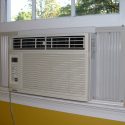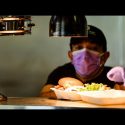COVID questions: Students returning home, playdates
Editor’s note: We will be publishing answers to questions about COVID-19 and the pandemic each week in this COVID questions column. If you have a question, please email it to covid19update@uc.wisc.edu.
Q: With students from most universities coming home at Thanksgiving, are there any precautions parents should take in anticipation of their son or daughter returning? Also, my daughter tested positive two weeks ago. Is it safe for her to come home for a weekend?
A: Whenever two or more households join each other, you want to make sure all of them are free of COVID-19 when they unite. So, the precautions are not very different from what anyone should be doing already. However, given the high-level spread of COVID-19 across the state right now, extra vigilance is needed.
Those traveling should get tested at least 72 hours before departure, so they get the test results back before leaving. Avoiding all risks for exposure to the coronavirus during the two weeks prior to the test will reduce the chance of being infected and having to be isolated before the anticipated travel. Being as or even more cautious after COVID-19 testing, which can be hard to do during transit depending on the type of transportation used, is imperative.
Households welcoming anyone living outside of the house should also avoid all opportunities to be exposed to the coronavirus for two weeks prior to their arrival. If everyone in the receiving household is risk-free, asymptomatic, and not recently exposed to someone with COVID-19, testing is not necessary. Everyone should also have gotten their flu shots since influenza transmission begins to ramp up around Thanksgiving in Wisconsin.
For your second question, it depends on whether your daughter experienced any COVID-19 symptoms. Since she tested positive, she should have self-isolated afterward. According to the CDC, most people with COVID-19 illness can discontinue isolation 10 days after the day symptoms first began. So, if your daughter’s symptoms began within the last ten days, then she should remain in isolation and not travel home for the weekend.
Also, she should not have a fever for at least 24 hours prior to travel without using any fever-reducing medications. Any other symptoms should also be improving and not worsening for it to be safe to come home. There have been cases in which people with severe COVID-19 illness are infectious longer than usual, and isolation must be extended to twenty days. If your daughter had severe COVID-19 illness, then she should consult her doctor before traveling. If she never had any symptoms, then she can discontinue isolation ten days after the COVID-19 test result; in that case, traveling home should be fine since she tested positive two weeks prior.
— Ajay Sethi, Associate Professor, Population Health Sciences; Faculty Director, Master of Public Health Program
UW-Madison students, faculty and staff are encouraged to review University Health Service Executive Director Jake Baggott’s message to students about COVID-19 increase on campus and suggestions for how UW employees can prepare for Thanksgiving recess. University Health Service also provides COVID-19 holiday Guidance, which can be found here.
Q: My three-year-old goes to daycare, where teachers wear masks but kids under five do not. One of her classmates’ parents asked if we wanted to have a playdate. Since the kids are already together unmasked at daycare every day, can we assume they’re in our “bubble” and do this, or is there increased risk with parents being there, too?
A: If possible, I encourage you to have this playdate in a way that allows you to keep your distance from the other child’s parents, such as outdoors. It’s true that the kids are in the same bubble, or germosphere as I like to call it, and you are both in your own children’s bubbles too.
However, what we know about the SARS-CoV-2 virus so far suggests that young children are less likely to get symptomatic COVID and are also less effective at transmitting COVID than are older children and adults. So even if your kids are sharing germs at school, there’s at least some chance that COVID in one of your households would not automatically be transmitted through the whole classroom bubble. That means fully combining your bubbles — for the adults, and any older kids — would increase the likelihood of COVID jumping from one household to the other.
– Malia Jones, Assistant Scientist at the Applied Population Laboratory, College of Agricultural and Life Sciences
Editor’s Note: this response was written before Governor Tony Evers issued Executive Order #94, which includes new measures to combat the spread of COVID-19, including recommendations of limiting trips outside of home for essential needs.
See more answers to COVID questions at https://news.wisc.edu/tag/covid-questions/. Also, visit our COVID-19 impact site.
Tags: COVID questions, covid-19



